Instruction
Gilchrist: 4 tips for playing in Open Championship-like conditions
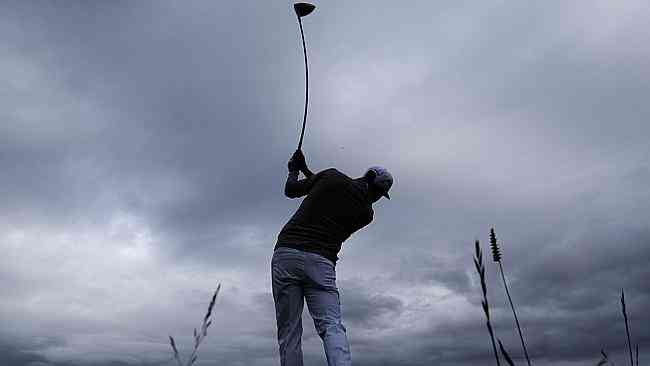
You can count on two things this year when The Open Championship heads to the home of golf at St. Andrews for the men, and Turnberry for the women this year: hard and windy conditions.
Playing golf in Scotland is one of my favorite things, and brings me back to my days growing up playing in South Africa. It also forces golfers to be more creative with their shots than they need to be at most courses in the U.S.
I love the challenge of playing links golf. The look of the courses is simple, but each hole has its own personality with the rolling fairways and greens. To me, that’s what makes an Open Championship.
So how will the players handle St. Andrews, and Turnberry in two weeks? And what should you do when playing across the pond or in similar conditions here the U.S.?
Here are my four tips for playing in hard and windy conditions.
Three-quarter swings
A three-quarter swing is a much more controlled swing. It allows you to take spin off the ball and control your trajectory for a more piercing ball flight, which is especially important with the wind players will face in Scotland.
How: Start with a stance that’s narrower than your normal stance with your feet at about shoulder width with your irons. This will restrict your shoulder turn during the takeaway and assist in a shorter swing. Then abbreviate your follow through as shown in the photo to lower the trajectory of your shot. It’s also important that you don’t make an aggressive move at the ball, which also produces more spin. Shoot for 70-80 percent in terms of your speed to control your ball… so you don’t have your ball controlling you in these conditions.
Use your tee to your advantage
Golfers can control trajectory with setup and the way they release the club, but don’t forget that you can use your tee to your advantage. Many golfers love to tee it high and let it fly, but an often overlooked and simple way to control the height of your shots in windy conditions with the driver is how high you tee it up.
Low
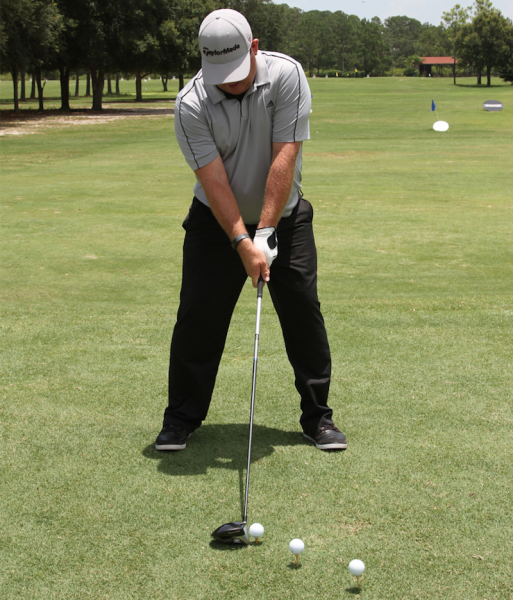 When playing into the wind, tee the ball lower than normal with your ball position slightly more back in your stance. This will help keep the ball under the wind, reduce spin and produce a lower, more piercing shot.
When playing into the wind, tee the ball lower than normal with your ball position slightly more back in your stance. This will help keep the ball under the wind, reduce spin and produce a lower, more piercing shot.
Medium
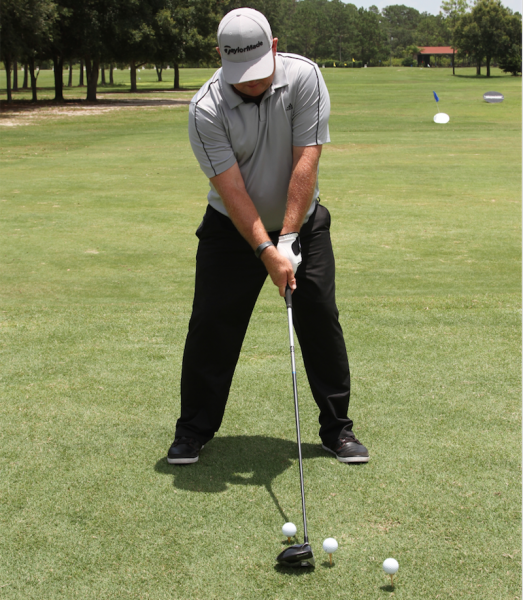 Under fair conditions with low wind, tee it at your normal height. This will vary for each player, but should be used as a reference point for teeing it lower and higher than you normally do.
Under fair conditions with low wind, tee it at your normal height. This will vary for each player, but should be used as a reference point for teeing it lower and higher than you normally do.
High
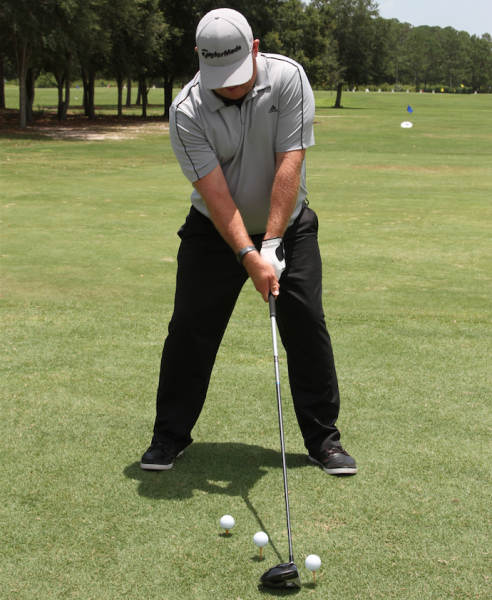 With the wind at your back, let it rip. Tee it high and let it fly. Move your ball position slightly forward with your spine and head tilted slightly away from the ball. This will produce a higher ball flight at impact that will ride the wind and get some extra distance out of your tee shot.
With the wind at your back, let it rip. Tee it high and let it fly. Move your ball position slightly forward with your spine and head tilted slightly away from the ball. This will produce a higher ball flight at impact that will ride the wind and get some extra distance out of your tee shot.
Cut your approaches
Approach shots into the greens at St. Andrews, Turnberry and many courses throughout Scotland will definitely have a tendency to roll out a little farther than you might think. One way to combat that is to cut your approach shots, which will allow you to hit them with a higher trajectory and more spin.
How: At address, open the club face slightly and move the ball a little more forward than you typically would with your wedges and short irons. This will create a higher ball flight and more spin, which will help your approach shots check on the hard, fast greens in Scotland. Theses shots will fly a bit shorter, and it will take a little practice to learn exactly how far these shots go for you. But once you figure it out, you’ll have learned a valuable shot for front pins and firm, fast greens.
Don’t fight the wind
Make it easier on yourself and play the wind. This will definitely take some trust in your swing and your game, as you might find yourself aiming in some wild places and hitting much longer clubs than you usually do. But that’s what it takes in these conditions to play your best!
- LIKE27
- LEGIT6
- WOW1
- LOL0
- IDHT0
- FLOP0
- OB1
- SHANK5
Instruction
Clement: Laid-off or perfect fade? Across-the-line or perfect draw?

Some call the image on the left laid off, but if you are hitting a fade, this could be a perfect backswing for it! Same for across the line for a draw! Stop racking your brain with perceived mistakes and simply match backswing to shot shape!
- LIKE0
- LEGIT0
- WOW0
- LOL0
- IDHT0
- FLOP0
- OB0
- SHANK1
Instruction
The Wedge Guy: The easiest-to-learn golf basic

My golf learning began with this simple fact – if you don’t have a fundamentally sound hold on the golf club, it is practically impossible for your body to execute a fundamentally sound golf swing. I’m still a big believer that the golf swing is much easier to execute if you begin with the proper hold on the club.
As you might imagine, I come into contact with hundreds of golfers of all skill levels. And it is very rare to see a good player with a bad hold on the golf club. There are some exceptions, for sure, but they are very few and very far between, and they typically have beat so many balls with their poor grip that they’ve found a way to work around it.
The reality of biophysics is that the body moves only in certain ways – and the particulars of the way you hold the golf club can totally prevent a sound swing motion that allows the club to release properly through the impact zone. The wonderful thing is that anyone can learn how to put a fundamentally sound hold on the golf club, and you can practice it anywhere your hands are not otherwise engaged, like watching TV or just sitting and relaxing.
Whether you prefer an overlap, interlock or full-finger (not baseball!) grip on the club, the same fundamentals apply. Here are the major grip faults I see most often, in the order of the frequency:
Mis-aligned hands
By this I mean that the palms of the two hands are not parallel to each other. Too many golfers have a weak left hand and strong right, or vice versa. The easiest way to learn how to hold the club with your palms aligned properly is to grip a plain wooden ruler or yardstick. It forces the hands to align properly and shows you how that feels. If you grip and re-grip a yardstick several times, then grip a club, you’ll see that the learning curve is almost immediate.
The position of the grip in the upper/left hand
I also observe many golfers who have the butt of the grip too far into the heel pad of the upper hand (the left hand for right-handed players). It’s amazing how much easier it is to release the club through the ball if even 1/4-1/2″ of the butt is beyond the left heel pad. Try this yourself to see what I mean. Swing the club freely with just your left hand and notice the difference in its release from when you hold it at the end of the grip, versus gripping down even a half inch.
To help you really understand how this works, go to the range and hit shots with your five-iron gripped down a full inch to make the club the same length as your seven-iron. You will probably see an amazing shot shape difference, and likely not see as much distance loss as you would expect.
Too much lower (right) hand on the club
It seems like almost all golfers of 8-10 handicap or higher have the club too far into the palm of the lower hand, because that feels “good” if you are trying to control the path of the clubhead to the ball. But the golf swing is not an effort to hit at the ball – it is a swing of the club. The proper hold on the club has the grip underneath the pad at the base of the fingers. This will likely feel “weak” to you — like you cannot control the club like that. EXACTLY. You should not be trying to control the club with your lower/master hand.
Gripping too tightly
Nearly all golfers hold the club too tightly, which tenses up the forearms and prevents a proper release of the club through impact. In order for the club to move back and through properly, you must feel that the club is controlled by the last three fingers of the upper hand, and the middle two fingers of the lower hand. If you engage your thumbs and forefingers in “holding” the club, the result will almost always be a grip that is too tight. Try this for yourself. Hold the club in your upper hand only, and squeeze firmly with just the last three fingers, with the forefinger and thumb off the club entirely. You have good control, but your forearms are not tense. Then begin to squeeze down with your thumb and forefinger and observe the tensing of the entire forearm. This is the way we are made, so the key to preventing tenseness in the arms is to hold the club very lightly with the “pinchers” — the thumbs and forefingers.
So, those are what I believe are the four fundamentals of a good grip. Anyone can learn them in their home or office very quickly. There is no easier way to improve your ball striking consistency and add distance than giving more attention to the way you hold the golf club.
More from the Wedge Guy
- The Wedge Guy: Golf mastery begins with your wedge game
- The Wedge Guy: Why golf is 20 times harder than brain surgery
- The Wedge Guy: Musings on the golf ball rollback
- LIKE88
- LEGIT14
- WOW6
- LOL1
- IDHT0
- FLOP4
- OB1
- SHANK8
Instruction
Clement: Stop ripping off your swing with this drill!

Not the dreaded headcover under the armpit drill! As if your body is defective and can’t function by itself! Have you seen how incredible the human machine is with all the incredible feats of agility all kinds of athletes are accomplishing? You think your body is so defective (the good Lord is laughing his head off at you) that it needs a headcover tucked under the armpit so you can swing like T-Rex?
- LIKE0
- LEGIT3
- WOW2
- LOL0
- IDHT0
- FLOP0
- OB0
- SHANK2
-

 19th Hole2 weeks ago
19th Hole2 weeks agoJustin Thomas on the equipment choice of Scottie Scheffler that he thinks is ‘weird’
-

 19th Hole2 weeks ago
19th Hole2 weeks ago‘Absolutely crazy’ – Major champ lays into Patrick Cantlay over his decision on final hole of RBC Heritage
-

 19th Hole3 weeks ago
19th Hole3 weeks agoTwo star names reportedly blanked Jon Rahm all week at the Masters
-

 19th Hole3 weeks ago
19th Hole3 weeks agoReport: LIV Golf identifies latest star name they hope to sign to breakaway tour
-

 19th Hole3 weeks ago
19th Hole3 weeks agoNeal Shipley presser ends in awkward fashion after reporter claims Tiger handed him note on 8th fairway
-

 19th Hole2 weeks ago
19th Hole2 weeks agoBrandel Chamblee has ‘no doubt’ who started the McIlroy/LIV rumor and why
-

 19th Hole1 week ago
19th Hole1 week agoLET pro gives detailed financial breakdown of first week on tour…and the net result may shock you
-

 Equipment2 weeks ago
Equipment2 weeks agoJason Day on his recent switch into Srixon ZX5 and ZX7 Mk II irons

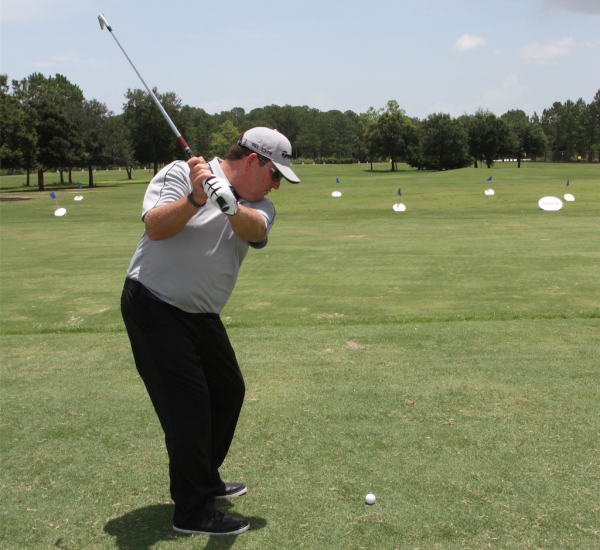
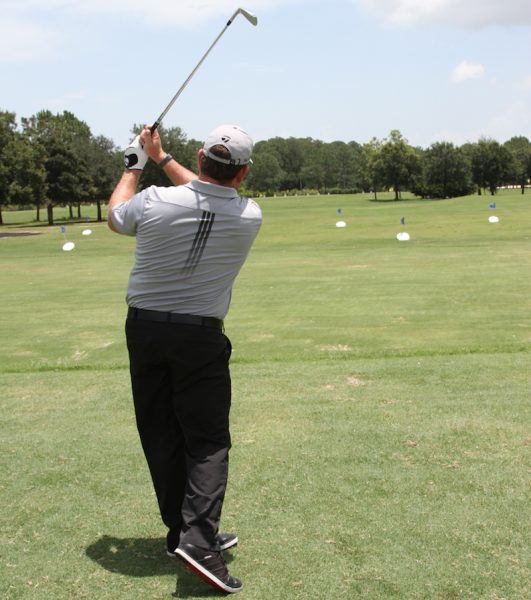
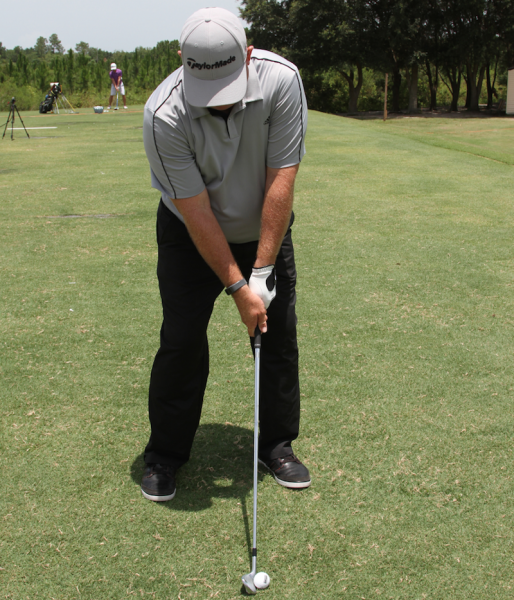

















Skully
Jul 21, 2015 at 3:09 pm
Um….this is a mistake: When playing into the wind, tee the ball lower than normal with your ball position slightly more back in your stance. This will help keep the ball under the wind, reduce spin and produce a lower, more piercing shot. (In actuality just the opposite) unless dynamic loft is lowered as well. You would think with modern teaching (Trackman) this would be widely known.
piedoFrank
Jul 21, 2015 at 11:58 am
wow what a basic and pointless article. Surely anyone with a interest level to log onto a golf forum would know such basic knowledge????
M
Jul 16, 2015 at 6:30 pm
Gary I’m confused with moving the ball back in the stance / lower tee with the driver.
Let’s say your attack angle is neutral with the “Medium” position. Wouldn’t moving the ball back with the same swing now have a negative angle of attack, which should add spin. Plus teeing it lower would hit it lower on the face which also adds spin?
I would think you would want to hit it higher on the face (regardless of tee position in stance) to try to get the lower spin.
prime21
Jul 18, 2015 at 7:42 am
M makes a great point here. As each player has been dialed in to achieve minimal spin from the tee, I would assume they would just hit their normal tee shot. I don’t think I have seen Dustin teeing it lower this week & he seems to be driving it fine! I guess a player w/ higher spin #’s & a slower swing speed may be helped by a more piercing trajectory w/ their driver, but this would be a case by case scenario, not “everyone should do this!” Sounds like a Trackman study to me!
ParHunter
Jul 16, 2015 at 9:56 am
“Golf Digest Top 50 Teacher in America and Golf Magazine Top 100 Teacher from Durbin, South Africa.” Durbin – I didn’t know they renamed Durban in KwaZulu Natal 😉